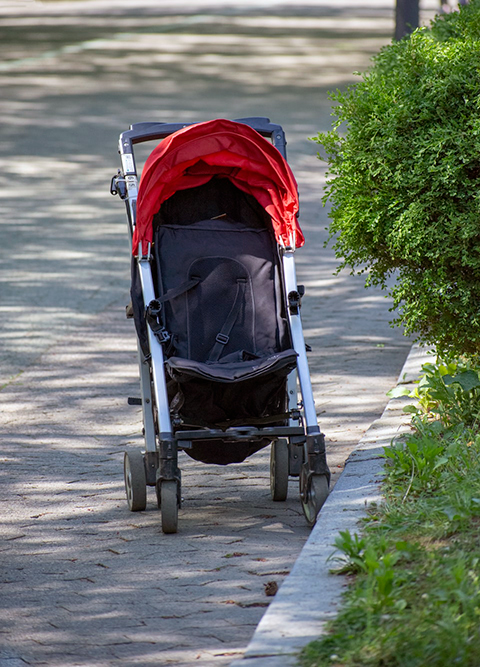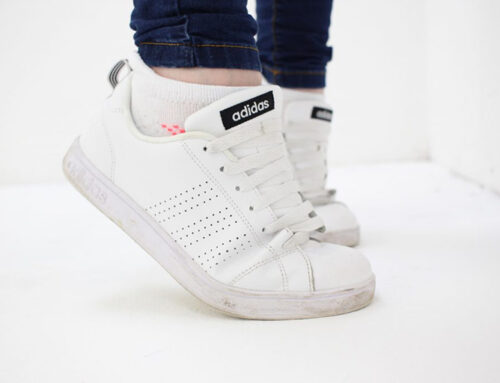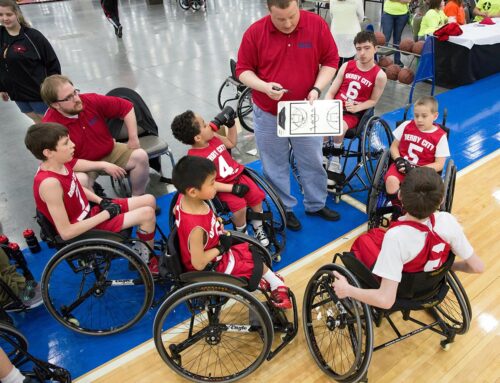Preventing Plagiocephaly and Torticollis in Infants: Why Parents Should Limit Their Use of “Baby Containers”
We’ve all seen it: commercials of the new Mom and Dad beaming with pride and adoration for their little one, gazing into their baby’s eyes as soft, playful music fades into the background. It all looks picture-perfect. Mom scoops Baby out of the newest, high-tech car seat and directly into the…Stroller? Bouncer Seat? Exersaucer? Or maybe the Bumbo Seat — a nightmare for your PT! With the strong influence of the media pushing advertisements for these “baby containers,” it can truly be challenging as a physical therapist when it comes to educating parents on limiting or even avoiding these devices as much as possible.
But, why? The baby in the commercial seemed to love her bouncer seat! That new baby carrier can be used both as a car seat and also to carry baby around while Mom is shopping — how convenient! Why wouldn’t a new parent invest in these devices or include them on the baby registry? In the world of pediatric therapy, it turns out there are a number of reasons why babies’ time in these devices should be kept to a minimum. Just because they are the convenient option, this does not make them the best choice for your baby’s development.
When a baby spends too much time in a “container” — anything that limits the baby’s movement or applies constant pressure to one side of their head — this can often lead to restrictions in range of motion, especially of the baby’s head and neck, which can progress into torticollis. It can hinder the development of gross motor milestones, like rolling from back to tummy or from tummy to back. Furthermore, too much time inside baby equipment can lead to plagiocephaly, flattening of the head that can lead to facial asymmetries and deformity. Even from other disciplines’ perspective, too much time in a container can cause social and cognitive delays, as the baby has limited opportunities to explore and interact with their environment.
While therapists do understand the need for car seats and carriers, these devices should be used for just that: riding in the car and when the baby needs to be carried from place to place. Parents often forget that “back to sleep” does not mean the baby should be on their back all day long, or left inside a carrier to stay in a “safe” position. Once inside the home, as long as the environment is safe, the baby should be placed on the floor on a blanket or mat and given the opportunity to move around.
Tummy time — placing baby on his or her stomach to work on head control and shoulder strength for pushing up — should begin as soon as the baby arrives home from the hospital, while supervised. Tummy time allows the baby to spend time in a position that applies no pressure to the back of their head, unlike containers which constantly apply forces to the same areas of the head. Parents should slowly increase the amount of tummy time their baby works on from week to week. It is helpful to work on tummy time after each diaper change to maintain a schedule.


Your baby should have space on the floor to move freely, with toys placed on both the left and right sides in order to encourage them to turn their head equally to both sides. When babies are placed only on their backs or inside carriers all day, they are not able to move about and may develop a rotational preference to only look to one side. While PT’s can assist with stretching and strengthening to resolve torticollis if it develops, parents should make an effort to proactively prevent this from developing. If parents notice that their baby tends to rotate to one side in their crib to look at a specific toy, object, or window, they can try alternating the baby’s position so their head faces the opposite side of the crib, allowing them to rotate the opposite way to view these objects. Parents can also try feeding their baby from the less preferred side and placing light-up or musical toys on the less preferred side while the baby is lying on the floor.
Time spent in bouncers should also be limited, as newborns have limited control over their head. Any length of time spent in the same position, such as a left or right head tilt while in the bouncer seat, can lead to tightness in the muscles of the neck and weakness on the opposite side. If parents do choose to place their baby in a bouncer or backpack/ carrier, they should be sure to alternate the position of the baby’s head to prevent prolonged positioning to one side. To reduce the risk of Sudden Infant Death Syndrome, the Academy of Pediatrics recommends placing babies on their back to sleep. Parents should still be sure to alternate the baby’s head so that it is not constantly rotated to the same side while they sleep on their back.
Overall, while it can sometimes be nearly impossible to avoid the use of baby containers during the day, parents should make it a priority to allow their baby time to move about on the floor in a safe space. Parents should also think twice before ordering that new piece of equipment, as commercials and other advertisements can easily catch anyone’s interest. It’s important to realize that many of these devices are not designed by therapists, and therefore, they are not always the best choice for young infants.
If parents do choose to purchase these devices or if they are received as a gift, then babies’ time spent inside them should be kept to a minimum. As the baby progresses in his or her development, there will likely be interest in baby “walkers” as well. For more information on why these should be kept out of the house, please read the following blog written by one of our Eyas PT’s. Feel free to reach out to any of our physical or occupational therapists at Eyas Landing if you are unsure of whether or not you should purchase a specific device for your infant!

Eyas Landing is a therapy clinic with a mission to provide evidence-based and family-centered therapy services for children, adolescents, and their families. The primary goal is to deliver relationship-based interventions within the most natural environments and to empower families to reach their full potential. To achieve this goal, our highly educated, compassionate staff dedicates time and expertise to create experiences that maximize therapeutic outcomes. The strength, determination, and perseverance of our clients are evident as they succeed in therapy, and ultimately in their daily lives.
Eyas Landing offers a wide range of comprehensive services including Speech Therapy, Occupational Therapy, Physical Therapy, ABA Therapy, Social Work, Family Therapy, and Neuropsych testing. Services are provided throughout the Chicagoland area via Telehealth, In-Home, and in our state of the art clinic.
Want to learn more or you have a specific question? Feel free to connect with us here!



